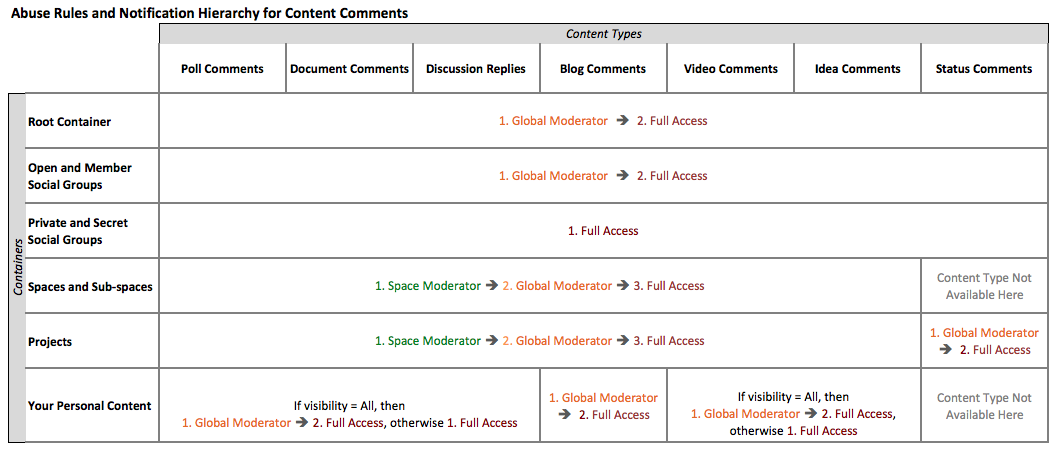When abuse reporting is enabled, people can use a link on content to report the content as abusive. When someone clicks the link, the content is sent to the moderator's queue so that it can be evaluated; while the content is waiting to be approved, it will still be displayed.
Abuse reporting is a system-wide, global setting: if it's enabled, it's on for every piece of public or private content on which abuse can be reported.
To set the threshold after which the offending content should be hidden until it can be reviewed by the moderator, use the Automatically hide content after setting. For example, if you set this value to 5 and then five users flag the same piece of content for abuse, the content will be removed from view pending moderation. By default, all content types (such as discussions, blogs, and documents) are handled in the same way when abuse is reported.
Note that the application does not send email notifications to moderators for abuse reports. To keep up with abuse reports, moderators and administrators should check their moderation queue. For more on moderating content in the queue, be sure to see Reviewing Queued Moderation Requests.
The following table shows the types of content that can be configured for abuse reporting, who moderates abuse reports, and the order in which Jive notifies the abuse reports moderator(s). When abuse reporting is enabled in a place, the application sends a moderation notification to the first valid moderator it finds. For example, if you set up a moderator for abuse in an open social group, Jive first looks for a Global Moderator; if there is none assigned, it then looks for a Full Access moderator. To understand where you set these roles, see Moderator Roles and Where to Set Them. Click on an image to enlarge it.

